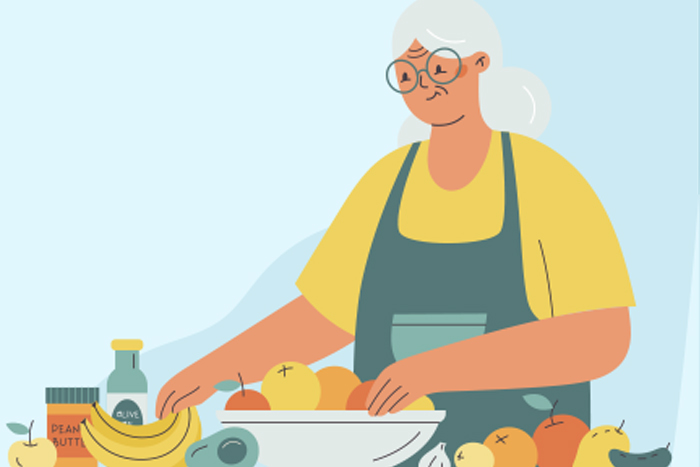Small Changes Add Up to a Healthier Life
Living with arthritis doesn’t mean you have to stop doing the things you love. With a few simple changes to your daily routine, you can move more easily, feel less pain, and enjoy life more. This article shares everyday ways to support your joints, eat well, stay active, and connect with others. You are not alone—and every small step you take can make a big difference.
Start with What You Eat
Some foods can help reduce the inflammation that causes joint pain and swelling. These are often called anti-inflammatory foods. They won’t cure arthritis, but they can support your overall health and may ease some symptoms.
Try adding more of these to your meals:
Fatty fish like salmon, tuna, or sardines (rich in omega-3s)
Leafy greens like spinach and kale
Berries like blueberries and strawberries
Nuts and seeds, especially walnuts and flaxseeds
Olive oil instead of butter or margarine
Harvard Health recommends building meals around these foods to help fight inflammation naturally.
Try to limit foods that may make inflammation worse, such as fried foods, sugary snacks, and processed meats.
Tip: You don’t need a perfect diet—just start by adding one healthy food at a time.
Keep Your Joints Moving
Even if you have arthritis, it’s important to move your body every day. Gentle activity helps keep your joints from getting stiff and supports your muscles, balance, and mood.
Good choices for people with arthritis include:
Walking at your own pace, indoors or outdoors
Stretching or light yoga to stay flexible
Water aerobics or swimming, which are easy on the joints
Chair exercises, especially if standing is difficult
Always warm up before activity and cool down afterward. If something hurts, stop and rest. You can always try again later.
According to the CDC, physical activity is one of the best ways to improve arthritis symptoms without medication.
Remember: The goal isn’t to work out hard—it’s to keep your body gently moving.
Make Time for Rest and Relaxation
Taking care of your joints doesn’t just mean moving. It also means giving your body time to rest.
Get enough sleep to let your body heal
Practice deep breathing or meditation to lower stress
Use heat or cold packs to ease pain and stiffness
Stress can make arthritis worse. Finding moments of calm each day—through prayer, reading, music, or even sitting quietly—can help your whole body feel better.
You're Not Alone: Find Support
Living with a long-term condition like arthritis can feel lonely. But it doesn’t have to be. Talking with others who understand what you're going through can give you comfort, advice, and a sense of community.
Consider:
Joining an arthritis support group (many meet online or in person)
Talking to a counselor or therapist
Sharing your story with a trusted friend or family member
You don’t have to tough it out alone. Others are walking this path too.
Talk With Your Doctor
Your care plan should be as unique as you are. Talk to your doctor about:
How to safely stay active
Which foods and supplements may help
Ways to manage pain, swelling, or fatigue
Whether physical therapy or medication is right for you
Don’t be afraid to ask questions. Your doctor wants to help you feel your best.
Little Steps Lead to Big Change
Arthritis may change how your body feels, but it doesn’t have to take away your joy or independence. By eating well, staying gently active, finding rest, and connecting with others, you can take control of your health—one day at a time. Listen to your body as you learn the do’s and don’ts.
You’re not stuck. You’re strong. And you deserve to feel good in your body.
Start small. Maybe add a veggie to dinner tonight. Go for a 5-minute walk. Call a friend. These little acts of self-care can build into a healthier, happier life.
Sources:
Centers for Disease Control & Prevention: About Physical Activity and Arthritis
Harvard Health: Foods that fight inflammation
Mayo Clinic: Arthritis

